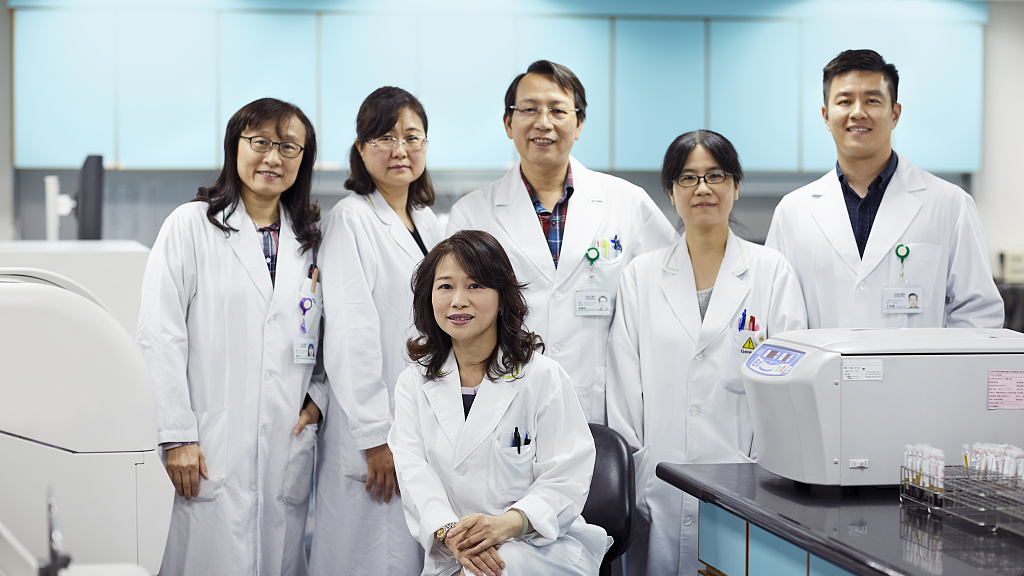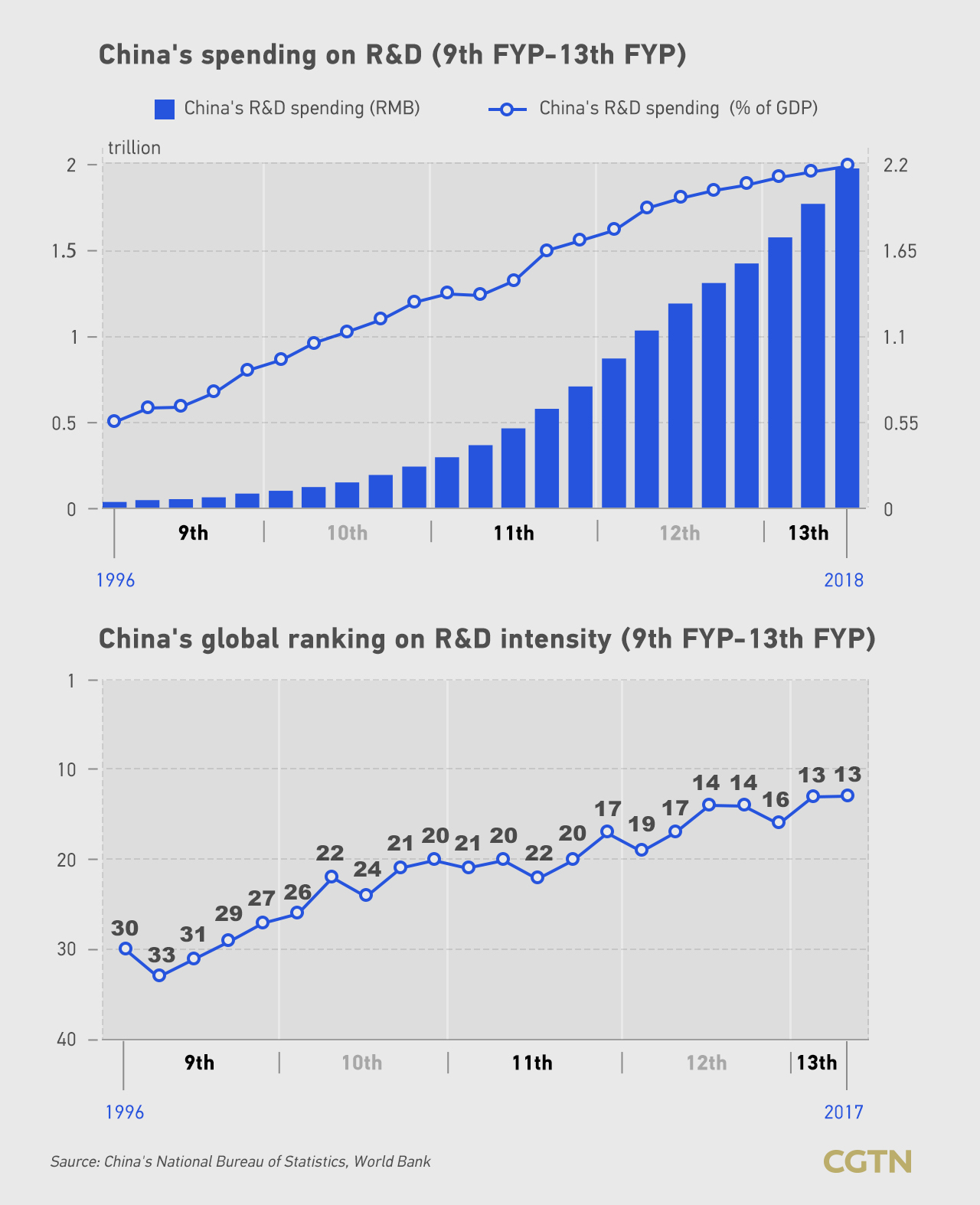
A group photo of scientists in a Chinese lab. /CFP
A group photo of scientists in a Chinese lab. /CFP
China has clinched the top position in the world for having the highest number of scientific and technological talents, hitting over 101 million, according to a report released at this year's China Science and Technology Think Tank Forum 2020 on Wednesday.
The report said China is leading the world in terms of the input-output ratio and the number of talents in science and technology sector, but it lags behind in terms of innovation capability and influence.
It noted that the country's spending on basic research exceeded 100 billion yuan (over 14.4 billion U.S. dollars) in 2018 for the first time. However, the spending on applied research, which is imperative for solving practical issues, is much lower than figures in developed countries, namely the United States, Germany, British and Japan.

China's spending on research and development listed in first Five-Year Plan (FYP)
China's spending on research and development listed in first Five-Year Plan (FYP)
China had 4.19 million people working in research and development (R&D) in 2018, maintaining the world's largest pool of R&D personnel for six years, according to the National Bureau of Statistics.
Read more: Technology in China's FYPs: From nonexistence to prosperity
She power
About the new talents who joined the pool after 2016, the report found that the level of education was proportional to the number of female talents – the higher the educational level, the larger the proportion of women. Over half the talents holding a masters degree are female, the report said.
"There are many national policies in favor of female scientists. For example, when applying for the Youth Project of National Natural Science Foundation of China, the age of male scientists cannot be older than 35 years, while their female counterparts can be up to the age of 40," said an associate professor of science and engineering at a university.
It's a sad but well documented fact that women are underrepresented in the professional life, and the scientific sphere is no exception.
A previous report shows female experts only comprise six percent of all members of the Chinese Academy of Sciences, the top scientific research institute in China.
Female science and technology workers won 34,000 awards in 2017, while their male counterparts were awarded 82,000, according to an annual report released by the China Association for Science and Technology.
As for the huge gender gap in Chinese scientific and technological research, one major reason is that many women have to allot time that could be dedicated to scientific research to raise children or handle other domestic affairs.
"In most cases, childbearing costs women, rather than men, so much of the time and energy that they have must be used to balance the home affairs and career development," said a PhD graduate in chemistry.
Read more: ShePower: From countryside girl to atmospheric scientist
ShePower: Her research is to 'fish' in human's brains
ShePower: The coronavirus database she built with a team helps many countries